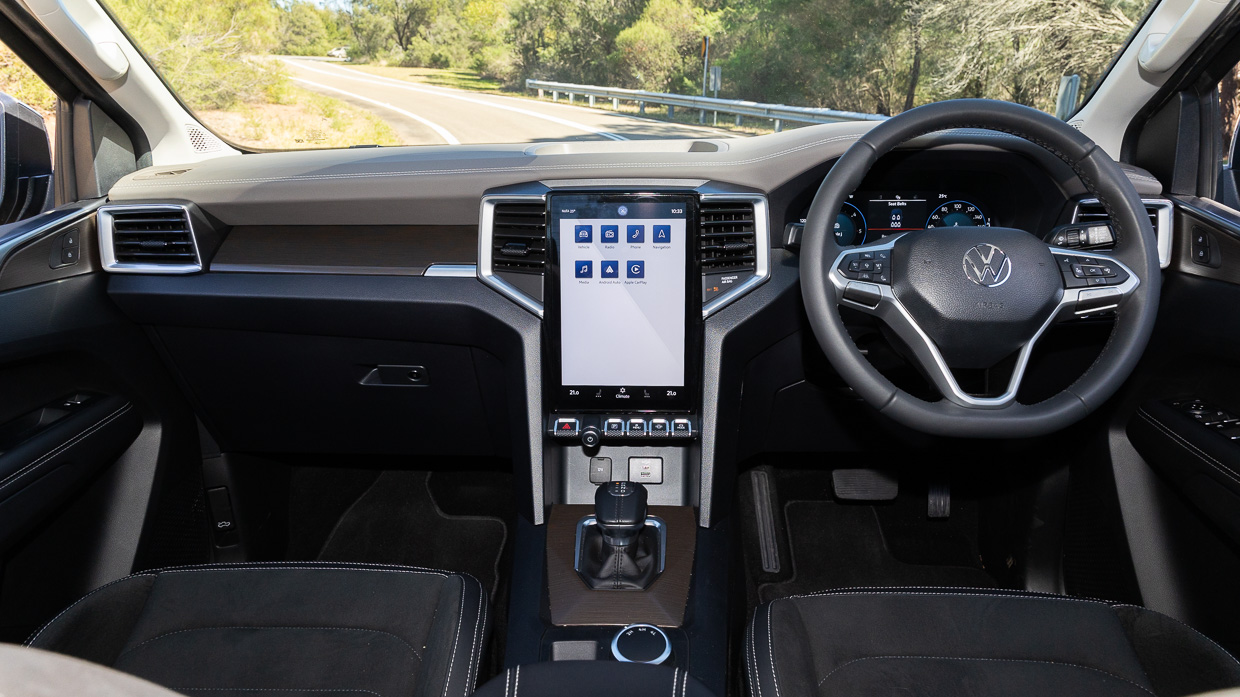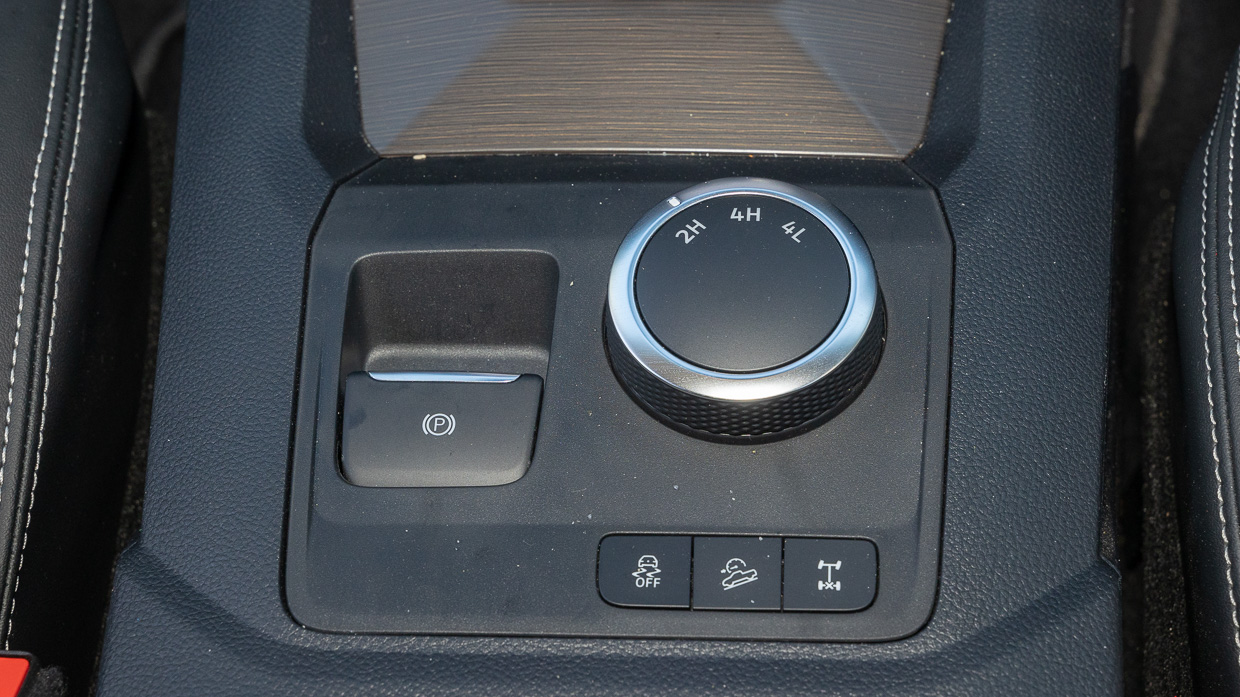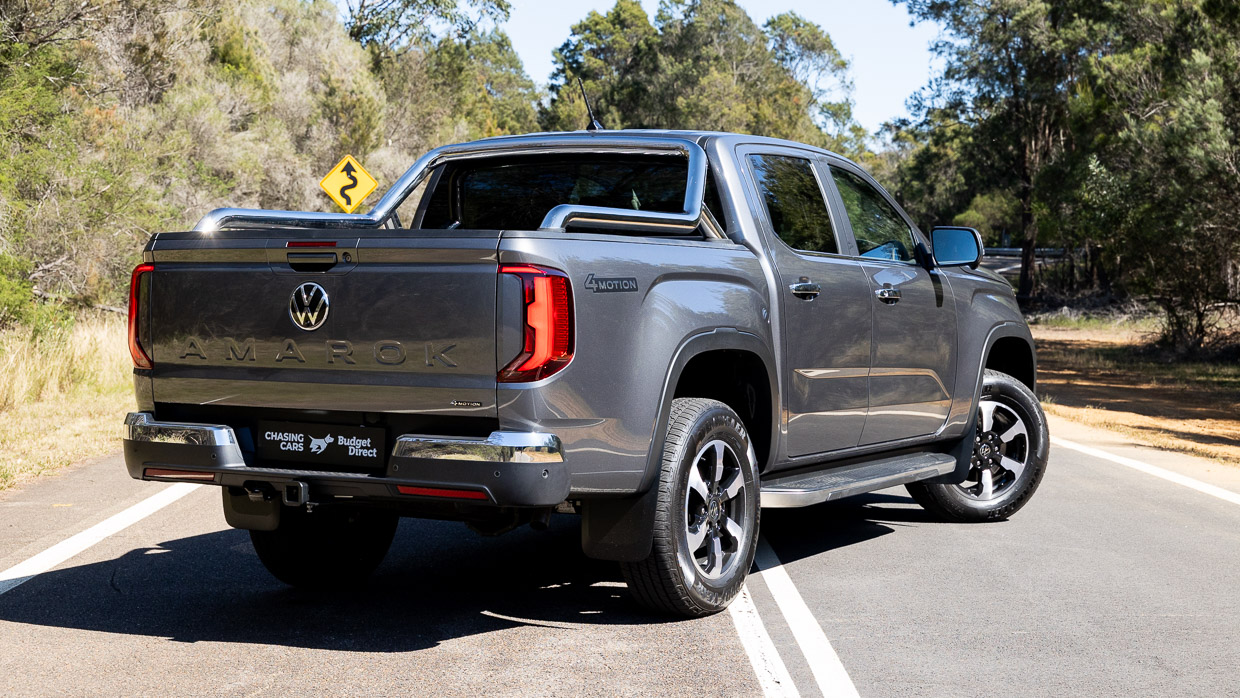-
Car Reviews
- All reviews
- Midsize SUVs
- Small cars
- Utes
- Small SUVs
- Large SUVs
- Large cars
- Sports SUVs
- Sports cars
- Vans
Latest reviews
- Car News
-
Car Comparisons
Latest comparisons
- Chasing Deals
Volkswagen’s mid-range Amarok Style variant shows you don’t need spend more to get one of the most accomplished ute packages on the market
Let’s face it: the ute market in Australia isn’t going to slow up any time soon.
BYD will launch its first-ever ute, the plug-in hybrid Shark 6, before the end of 2024, while Kia’s highly anticipated Tasman ute will be with us in 2025.

Currently, there are 14 brands battling it out in our utility/ute/pickup market. And while you may have the two heavy sales hitters in front of mind – the Ford Ranger and Toyota Hilux – there is still plenty of breadth and variety in the alternatives. From body style type to a range of price brackets, there ought to be a ute for almost everyone.
When global automaker Volkswagen partnered up with Ford to build the latest Amarok ute, the brand set out to reinvent its particular pickup spin.
When I first drove the current Amarok, it was a Panamericana variant, and I loved it. Since then, I’ve been able to drive almost every iteration in the lineup, including the Core, Life, Aventura and now, for this review, the Style variant.

So that puts me in a good position to assess whether buyers need to spend big money on highly specified Amaroks, or might you be happy with the mid-spec Style instead, on test here in four-pot TDI500 guise?
Could the Style be the sweet spot of the entire range? We drove the Amarok Style TDI500 extensively, including touring the Sydney Spring Drive Day with Drive Against Depression, to find out.
For this test, we were given the keys to a Style TDI500 which is currently priced at $70,990 driveaway.
You can get a 3.0-litre V6 oiler powered TDI600 powertrain in Style trim for a $5000 premium, or from $75,990 driveaway before options.

As standard, the Amarok Style gains the following features:

Braked towing 3500kg, while the payload in the tub is 1009kg.
As for options, our Style had optional Dark Grey Metallic paintwork, one of seven premium paint hues that cost an additional $1100. Solid white is no cost. Inside, Ebony Black & Grey upholstery is included at no cost.
Volkswagen also has an extensive genuine accessories range including canopies, bull bars, drawer systems, dual battery systems, recovery kits, roof racks and even rooftop tents.
When the Amarok came into the Chasing Cars garage in the same week as my latest Drive Against Depression charity drive day adventure, I wasn’t expecting to take a great big ute up the steep and winding Macquarie Pass, near Wollongong, south of Sydney.
Usually, utility vehicles and corner carving do not mix, but then I remembered that the Amarok is one of the best utes to drive in the segment. You may think that’s odd, but I’ll try my best to explain why.

The TDI500 has the 2.0-litre bi-turbo four-cylinder engine that produces 154kW and 500Nm. This engine is also available in the very-related Ford Ranger and has been for some time.
The turbo-diesel four is paired to a ten-speed automatic transmission that sends all that grunt to a part-time four-wheel-drive system.
Saddling up in the Amarok and driving about for the first time, I am reminded just how car-like this ute is. I’ve spent the last two months driving all sorts of utes and, to compare, the Amarok sets the standard for ride quality and refinement.

Volkswagen has been able to do the seemingly improbable: make a leaf-sprung ute ride a lot like that of a passenger vehicle. It’s controlled and well damped and felt comfortable day in and day out.
And while there is some obvious body roll, the Amarok handles with surprising levels of poise.
Having been the custodian of a Ford Ranger Wildtrak V6 long-termer, I thought the transition to the ‘family’ four-cylinder bi-turbo four would be a noticable step down. Instead, I was pleasantly surprised at the response from the four-pot oiler.

And while it might not be as smooth as the silky, quiet and somewhat lustier V6 diesel, the bi-turbo gets the job done without musch fuss or sweat and is a little bit more frugal while doing so.
Get the Amarok up to speed on the highway and the ute falls into a nice rhythm. The engine is quiet and hums away quite softly, while the transmission finds its natural resting place.
On our drive to Bowral via the Macquarie Pass, the Amarok kept up with the pack and was actually pretty fun to drive. Who said dual-cabs couldn’t be entertaining within reason?

Last year, I attended the launch of the Amarok Core and Life models – the more basic variations in the Amarok family tree – and both variants tackled some serious off-roading challenges with confidence and ease.
Now, as I jump up the ladder to the Style, the Amarok recipe remains the same: ease of use off-road, plenty of power to get through the tough stuff, and plenty of confidence.
We finished the DAD drive in Bowral and I honestly walked away from the Amarok Style after three hours at the wheel with a definite sense of respect for the ute and its capabilities on and off road.
Volkswagen sure does know how to do an interior. And that extends to bring a sense of solidity and class to a segment that so often lacks for them.
I’m immediately drawn to the Style’s ArtVelours contrast interior trim, the choice of cabin materials, the well-bolstered front seats and the smorgasbord of standard tech.

Not only does the Amarok Style feel well built, it feels like it would last even the toughest and roughest of treatment. The lack of leather upholstery, as fitted to the Panamericana one rung up the range, actually doesn’t bother me; the Style feels premium even without any cow hide in the interior.
One particular highlight of the cabin are the front seats. Not only are they comfortable, but they are also supportive, well bolstered and don’t hurt your back even after a few hours on the road.
It’s a good seating position, too, with more of a sitting in the car, rather than on the car vibe.


It’s worth noting that Amarok Style buyers will gain electric adjustment for the driver’s seat, but only manual adjustment for the front passenger.
As for technology, the key cabin highlight is the large 12-inch centre touchscreen that runs wireless Apple CarPlay and Android Auto. If you compare it to a Ford Ranger, you won’t get a 12-inch screen until the Wildtrak grade, so for the Amarok to have this feature halfway up the family tree is a big tick.
However, Volkswagen has chosen to put the climate control inside the screen, rather than having physical climate control buttons like what is found in the Ford Ranger. The Ford design is simply better to use.


Despite this annoyance, the Amarok’s core screen is largely a pleasure to use. The only other notable downside is the lack of a physical auto start/stop button, which is instead buried in sub menus…again, unlike the easily accessible dedicated console button in Ranger.
For the driver, the Amarok Style provides more control over settings thanks to a 12.3-inch digital cockpit.
Here, you can adjust settings on the fly thanks to the steering wheel buttons, as well as monitor tyre pressure monitoring and more. Like the touchscreen, this is a nice clean and clear screen and is of high quality.

In the second row, things are a little more squishy, however it’s a suitable space for adults to ride back there for moderate journeys.
Other convenience features such as a 12-volt port and air vents feature, however there is a lack of USB-C or USB-A ports in the second row.
In the tray, dimensions back there are 1544mm long by 1224mm wide. There is a power socket to power tools or a fridge, but no flexible mounting rack system like what you’d find in a Nissan Navara.

The Style gains a stainless steel sports bar, though there’s no tubliner or damped tailgate functionality in this grade.
All in all, the Amarok Style offers plenty of technology, practicality and, yes I’ll say it, style, in the ute market in 2024.
The Volkswagen Amarok dual-cab variants currently hold a five-star ANCAP safety rating.
In assessment, the ute returned a 86 percent adult occupant protection score, a 93 percent child occupant score, 74 percent for vulnerable road user protection and 83 percent for safety assist.

As standard, the Amarok is fitted with the following safety features:
But how does this all work in the real world? The Amarok seemed to be fairly well tuned, with the lane keep assist easy to switch off with just two presses of one of the steering wheel buttons.

I found the parking sensors to be a little too sensitive and a little overprotective for my personal tastes, but these can be obviously switched off in the settings menu.
As is the case for all new Volkswagens sold in Australia, the Amarok is offered with a five-year, unlimited-kilometre warranty.
With a Volkswagen care plan, servicing the Amarok Style will cost $1900 over a five-year period. Service intervals are set at 15,000 kilometres or 12 months, whichever occurs first.

The bi-turbo Amarok Style has an official combined fuel efficiency of 7.2L/100km but in the real world, after almost 500 kilometres travelled, we saw roughly 8.4L/100km across a range of different driving environments and situations.
I come back to my original questions: do you need to buy the most expensive Amarok and is the Style the pick of the range?
I definitely think so. Despite not being the cheapest ute in the range (or segment), the Style offers power, practicality, car-like ride quality and a lifestyle focus that would suit a lot of Aussie buyers.

However, it’s not perfect. The Amarok remains on the pricey side of the segment, Style included. It’s not particularly fuel efficient as is claimed in bi-turbo form, and not that more frugal than the 3.0L V6. And it has some niggling annoyances, like the buried climate control functions.
With all that being said, the Volkswagen Amarok remains one of the best utes you can buy in Australia.
Sure, there are more utes on their way, but the Amarok should be able to fight them off.
About Chasing cars
Chasing Cars reviews are 100% independent.
Because we are powered by Budget Direct Insurance, we don’t receive advertising or sales revenue from car manufacturers.
We’re truly independent – giving you Australia’s best car reviews.
The estimate provided does not take into account your personal circumstances but is intended to give a general indication of the cost of insurance, in order to obtain a complete quote, please visit www.budgetdirect.com.au. Estimate includes 15%^ online discount.
^Conditions Apply
Budget Direct Insurance arranged by Auto & General Services Pty Ltd ACN 003 617 909(AGS) AFSL 241 411, for and on behalf of the insurer, Auto & General Insurance Company Limited(ABN 42 111 586 353, AFSL 285 571).Because we don’t know your financial needs, we can’t advise you if this insurance will suit you. You should consider your needs and the Product Disclosure Statement before making a decision to buy insurance. Terms and conditions apply.
Indicative quote based on assumptions including postcode , 40 year old male with no offences, licence suspensions or claims in the last 5 years, a NCD Rating 1 and no younger drivers listed. White car, driven up to 10,000kms a year, unfinanced, with no modifications, factory options and/or non-standard accessories, private use only and garaged at night.
^Online Discounts Terms & Conditions
1. Discounts apply to the premium paid for a new Budget Direct Gold Comprehensive Car Insurance, Third Party Property Only or Third Party Property, Fire & Theft Insurance policy initiated online on or after 29 March 2017. Discounts do not apply to optional Roadside Assistance.
2. Discounts do not apply to any renewal offer of insurance.
3. Discounts only apply to the insurance portion of the premium. Discounts are applied before government charges, taxes, levies and fees, including instalment processing fees (as applicable). The full extent of discounts may therefore be impacted.
4. We reserve the right to change the offer without notice.